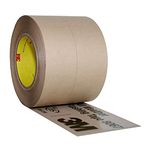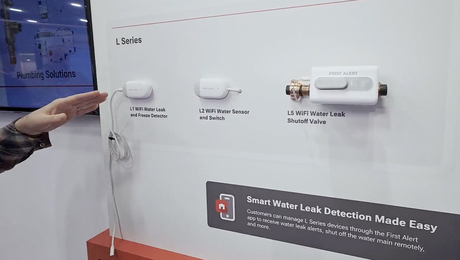The Aga takes some heat
What a swell idea: a stove that never turns off (“One Cook’s Aga Saga,” FHB #143, pp. 124, 126). Next house we build, I’ll ask the electrician to wire the lights hot and leave out those unsightly light switches. While we’re at it, let’s install an air conditioner that runs continuously. Think of the wear and tear it would save on the control knobs, and come winter, we’ll just crank up the furnace a bit higher.
I’ll admit it: The Aga stove is a beauty, and I’m sure it is a wonderful cooking machine. But 700 gallons of propane a year? I am an avid cook. Seven days a week, breakfast and dinner, three out of four burners on my stove are roaring. I use about 12 gallons of propane a year for cooking.
Money is not the issue, waste is. Water, fuel and the air that we breathe are all finite resources. As architects and builders, let’s treat the planet as we would run a quality home project: efficiently, with care and attention to detail and with the hope that our work will endure for many generations to come.
—Jeremy Werlin, Cedaredge, CO
I must protest your featuring the Aga cooker in your Kitchens & Baths issue. I note that Carmen Jensen (“One Cook’s Aga Saga,” FHB #143, pp. 124, 126) had to decide between an Aga and a sable coat, thus clearly indicating where her sensibilities lie. Even if we were not aware of global warming and not concerned about our energy usage (the average U. S. energy usage is twice that of other industrialized countries), the use of an always-on device such as the Aga would be unconscionable. It is incredible that there is a market for an item that so profligately wastes our natural resources.
The manufacturer’s statement that the Aga “throws off only as much heat as 10 to 12 100w bulbs” is telling: 1200w is like having an average space heater on all the time. It would also add over $120 to my monthly bill.
The irony of this is that you also feature in the same issue Regina Schrambling’s “Too many designers in the kitchen,” a piece by a trained chef who shows the incongruity of those who choose gadgets for their status rather than for their utility. I suggest that your magazine raise its own awareness of sustainability and energy-consciousness, and think twice about giving press to antisocial products.
—Chandru Murthi, Brooklyn, NY
Charles Miller, editor of Kitchens & Baths, replies: I appreciate your notes about the Aga cooker. I also agree that there’s a certain irony within the issue of the magazine when you consider that it contains some expensive projects and a lead essay that talks about the unnecessary gadgets that a lot of people put in their kitchens. That’s intentional. Our audience includes folks with a lot of different motivations when it comes to personalizing their homes, and we think it’s incumbent upon us to present a broad range of solutions to similar problems. On p. 93, Clem Donahue makes a case for recycling old stoves. On the other hand, Carmen Jensen wants her Aga, and she admits up front that it’s an indulgence. But she also lives in a cold climate, where the stove can help to heat her house. She’s retired, and much of her life is centered around cooking.
We have a smart, curious audience, and I expect that some of our readers have seen these stoves in ads and articles, and have wondered about them. Nowhere else have I read the lowdown on how much gas they use, how much they cost or what it’s like to cook on one. I think a review like this will help people make up their own minds about Aga cookers, and whether this appliance is a good choice.
Too many palatial kitchens
I just received your latest issue on Kitchens & Baths (FHB #143), and I found Regina Schrambling’s essay, “Too many designers in the kitchen” (pp. 6, 8, 10) refreshingly poignant. Too bad the rest of the issue is full of ostentatious kitchens (and baths) just like the ones Ms. Schrambling describes (save the $13,000 Berkeley remodel on pp. 92-95).
A kitchen is a workshop, for heaven’s sake. Please, please take your cue from Regina Schrambling, and publish more articles about the kitchen (as well as other rooms) as a functional part of a home, not as a palatial showcase.
—Klaus Monberg, Portland, OR
Claims kitchen showrooms are the problem
I don’t take issue with Regina Schrambling’s basic premise in “Too many designers in the kitchen” (FHB #143, pp. 6, 8, 10), that the functional needs of clients/users are often forgotten in the process of getting kitchens built. But I bristle at her assumption that what gets marketed as “kitchen design” or “custom kitchens” has anything remotely to do with kitchen design or custom kitchens.
Ms. Schrambling is reacting to the marketing-driven kitchen-showroom approach, which is basically just retailing. Kitchen showrooms use computer-generated plan documents to fill up spaces indiscriminately with factory-made cabinet boxes. Generally speaking, kitchen showrooms are not selling design; they are selling products.
My guess is that Ms. Schrambling hasn’t worked with a free-lance designer of kitchens, someone who spends many hours interviewing clients and literally hundreds of hours (no kidding) back at the office putting pencil to paper trying to design for those clients. There’s no pushing of steroid-pumped, overkill appliances and other high-markup goods. Clients do, of course, demand things that have little to do with functionality. Good designers apprise clients of the consequences and move on; the designer’s preferences don’t matter.
Readers may be smirking that this is all well and good but that free-lance designers cost a lot more than the free floor plans that Home Depot provides. In fact, an independently designed kitchen costs no more than a typical showroom kitchen at the end of the day. The difference is that you pay more for design work and less (or nothing) in markups on labor and goods. Moreover, free-lance designers (at least this one) freely share information on costs upfront. Try getting a kitchen showroom to disclose all of its markups and the real cost of getting your kitchen built.
Thanks, Ms. Schrambling, for railing against the tyranny of marketing over common sense.
—Patrick Sutton, Alexandria, VA
Differential loads on concrete piers
In regards to the article “An Industrial Loft in Texas” (FHB #144, pp. 66-69), Richard Wintersole states “we located 12-in. dia. concrete piers to carry equal loads … ” The photograph, however, shows piers around the perimeter and a row down the middle. In a situation such as this, these piers will not have equal loads. The interior piers will carry far more than the exterior, in fact, up to four times the load of the corner piers. This part of footing design is often neglected, the balancing of footing bearing pressures throughout the structure. This balancing will lessen the chance of differential settlement or heaving, which is especially important with steel structures on piers.
—Ted Gribble, PE, via e-mail
Richard Wintersole replies: Sorry, Ted. Most of the loads are transferred from the steel frames to the outside perimeter beams and piers. Look at the construction photos. All of the roof, the second floor and the exterior walls are supported by the outside beams. Only the first floor is supported by the exterior and interior beams. By the way, the same structural engineer who did the soils testing designed the foundation.
Two-in. cavity is too big for brick
The article “Flashing Brick-Veneer Walls” in your October/November issue (FHB #142, pp. 62-67) made me grimace. Douglas Stieve, the author, talks about maintaining a 2-in. airspace between the back of the brick and the exterior-wall sheathing. This concept works well if the structure has no windows or doors and if it has 10-in. thick foundation walls. In the real world, window and door trim rarely, if ever, projects more than 11⁄4 in. beyond the sheathing. Commonly, it is only 1 in. The 2-in. airspace would allow you to look behind the brick wall at each and every door and window. A bricklayer could make a costly return at each window and door opening, but this would drive the cost of the job through the roof.
What’s more, a 2-in. airspace would not work on a typical 8-in. poured concrete wall and is totally out of the question if the wall happens to be an 8-in. concrete block that measures only 75⁄8 in. The wood framing sill plate would not be able to bear completely on the foundation wall.
—Tim Carter, via e-mail
Douglas Stieve replies: Although a 1-in. or 11⁄4-in. cavity is typically constructed with wood-frame houses, water can easily bridge across the thinner cavity on wall ties and/or mortar droppings. Most homes are protected by overhangs and their relatively low height, which both reduce the amount of water that strikes the exterior face of the brick. Still, I prefer the 2-in. cavity.
Rarely are walls perfectly constructed, and the wider cavity is good insurance, especially for homes not protected by trees or large overhangs or for any masonry that terminates over occupied space. To make the larger cavity work, you can use 10-in. block or cast the poured-in-place concrete foundation wall a little wider. The window and door jambs can be easily extended, or a larger casing can be used.
Which comes first, the brick veneer or the doors and windows?
As an engineer who frequently deals with water-leakage problems in buildings, I found your article “Flashing Brick-Veneer Walls” (FHB #142, pp. 62-67) very interesting. Although I agree with and commonly use many of the flashing details shown, there is one detail that is not needed and, most of all, cannot be constructed.
The text of the article and the illustration on p. 65 indicate “flexible membrane attached to the sheathing and to the window jamb.” In a typical building construction project, the wood-frame walls and brick veneer are in place well before the windows are even delivered to the site. By the time the windows are installed, it would be impossible to adhere the membrane to the window jambs. Even if the flexible membrane were applied to the sheathing before the brick veneer went up and the edge were left exposed to be adhered to the window jamb later, the area would be inaccessible as soon as the window was set into place. How then can the flexible membrane be installed as indicated?
—Stephen Williams, Quincy, MA
Douglas Stieve replies: The windows have to be installed before the brick veneer goes up. I have seen many homes, including my own, constructed this way.
If the windows are installed after the brick veneer, I recommend that the drainage cavity adjacent to the windows and/or doors be closed off with wood blocking. The flexible membrane should then wrap around the blocking to close the gap between the drainage cavity and the window or door.
Engineer argues against a home-building career
I read your “Q&A” item “Becoming a builder” (FHB #142, p. 24) from an engineer wanting to leave the rat race of the corporate world to become a builder. I am 50 years old and have been a builder since I was 18. However, at the tender age of 40, I left the rat race of home building to become an engineer. I now have a great job as an engineer for a small city utility company. I say “great” because it has all the fun of working with a crew of crazy guys with none of the hassles of contracting work. I go home at the end of an eight-hour day, the phone rarely rings, and the paychecks come at regular intervals, which never happened when I was a homebuilder. I still have to take 400mg of ibuprofen daily to soothe the aches and pains of many years of hanging from a scaffold and whacking with a hammer. Even if you include paying off the student loans, the engineering degree pays better, my family sees me more often, and I can do engineering when I can no longer climb a ladder.
Now I do carpentry and cabinet work for the joy of it, and I read Fine Homebuilding to refine my skills. Plus, I get to do projects for myself. This is the long way of getting to the point: Don’t give up your job to go into home building simply for the love of the work—you could do both. Home building is stressful, and you rarely get to do it just your way. At best, it is a compromise between client and builder.
—James Burnham, Oak Ridge, TN
Steam-shower errata
In the article “Residential Steam Showers” in our Kitchens & Baths issue (FHB #143, pp. 86-89), the upper right photo on p. 87 should have been credited to the Steamist Co. The photo on p. 88 is of a Mr. Steam steam generator, not of a Roma generator. Finally, in “Sources of steam generators” on p. 89, “Tylo” is misspelled “Tyco,” and there are two other U. S. distributors for Tylo products: Baltic Leisure (800-441-7147; balticleisure.com) and Sven’s Sauna (800-750-2944; bygginc.com).
Fine Homebuilding Recommended Products
Fine Homebuilding receives a commission for items purchased through links on this site, including Amazon Associates and other affiliate advertising programs.

Reliable Crimp Connectors

8067 All-Weather Flashing Tape

Affordable IR Camera






















